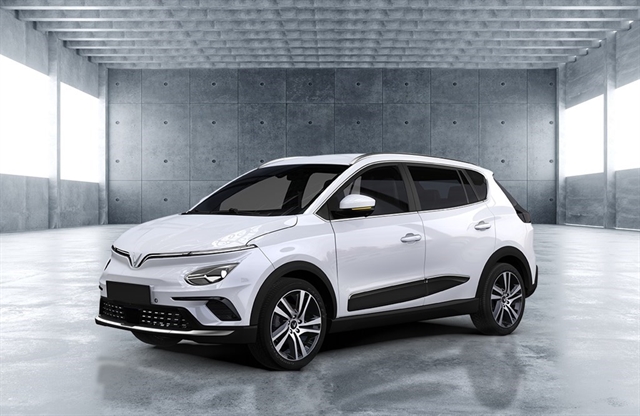Electric cars are an irreversible trend in the auto industry and are expected to grow strongly. To take advantage of this, the Vietnam Automobile Manufacturing Association (VAMA) has outlined plans to develop the local electric car industry.

Electric cars are an irreversible trend in the auto industry and are expected to grow strongly. To take advantage of this, the Vietnam Automobile Manufacturing Association (VAMA) has outlined plans to develop the local electric car industry.
The plans to conduct a roadmap for the development of electric cars in Viet Nam were discussed during a recent webinar co-organised by Giao thong (Transport) newspaper in collaboration with the Vietnam Automobile Manufacturers Association (VAMA) and the Vietnam Motorcycle Manufacturers Association (VAMM).
Viet Nam’s policies for electric automobiles lag behind peers such as Thailand, Malaysia and Indonesia. Nevertheless, change is slowly but surely happening in the country.
Dao Cong Quyt, a representative of VAMA, said that Viet Nam’s infrastructure for the development of electric vehicles may not be ready soon. There is also a lack of charging stations. Currently, almost no charging stations are available for electric cars in the country. Power production and supply are also an issue for the development of electric vehicles.
Most families in Viet Nam are not able to afford to install home charging stations, while they are quite common in other countries.
Moreover, the shift from producing traditional cars with internal combustion engines (ICE) to electric vehicles will lead to halts in the production of the obsolete car segment. Therefore, a certain transition is required while electric cars and low-emission vehicles should be developed during the transition.
To develop Viet Nam's electric automobile industry, VAMA has planned three development stages.
Between 2021-2030, Viet Nam’s automobile industry will set a target of manufacturing approximately one million cars of all types and internal combustion engines (ICE) vehicles remain dominant. However, the number of electric vehicles will also gradually increase.
Between 2030-2040, the development of electric vehicles will see strong growth with a production capacity of 3.5 million vehicles during the period.
From 2040 to 2050, the local automobile industry will see stable development and it then will become saturated with a production capacity of between 4-4.5 million vehicles.
To bring the goals into reality, VAMA has proposed the Government to stimulate consumer demand by offering preferential special consumption tax for the development of electric vehicles. It has called on the Government to cut 50 per cent of registration fees for hybrid electric vehicle (HEV), 70 per cent for plug-in hybrid electric vehicles (PHEVs) and 100 per cent for battery-powered electric vehicles (BEV).
In addition, financial support for parking fees and environmental taxes are also needed while the installation of charging station infrastructure must meet required standards.
Phan Thi Thuy Duong, director of VinFast’s Battery Development Centre, said Viet Nam is enjoying a golden chance to develop the electric vehicle industry. She added the country has great potential to develop clean power sources such as wind and solar power that are an important platform for electrification.
She noted that to take the golden chance, Viet Nam needs to quickly complete its legal framework and the installation of public charging infrastructure must be built together with the development of transport and electricity grid networks in a synchronous manner.
The Ministry of Finance and the Ministry of Transport have also proposed the Government to soon conduct regulations on investment in new public vehicles that must be electric. — VNS




